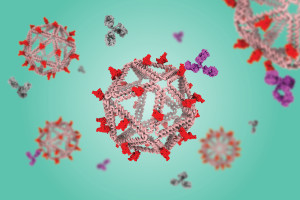pte20240202002 Research/Development, Medical/Health
Experiments in a mouse model were successful – according to MIT, the immune system is now fighting the right enemy
 |
|
The DNA structure hides virus-like particles very effectively (Credit: The Path Lab) |
Cambridge (pte002/02.02.2024/06:00)
Using virus-like transport particles made from DNA, researchers have surpassed… Massachusetts Institute of Technology (with) and Harvard University immune system and thus vaccines are more effective. The vaccine tested in mice consisted of a DNA scaffold containing multiple copies of the viral antigen.
No unwanted immunity
This type of vaccine mimics the structure of the virus. Previous work on particle vaccines has relied on protein scaffolds, but the proteins used in these vaccines trigger an unwanted immune response that can divert the immune system from the target. In a mouse study, the researchers found that the DNA scaffold did not trigger an immune response, allowing the immune system to focus on the target.
“We found that DNA does not elicit antibodies that can deflect it from the target protein,” says Mark Bathe, a professor of bioengineering at MIT. This means that the immune system is fully focused on replicating dangerous viruses and developing effective defense mechanisms.
Simulation can save lives
Researchers say this approach, which strongly stimulates antibody-producing B cells, could make it easier to develop vaccines against AIDS and other hard-to-fight viruses, including influenza and the coronavirus. Unlike T cells induced by other types of vaccines, these B cells, trained to respond to specific viruses, persist for decades, providing long-term protection.
Particulate vaccines consist of a protein nanoparticle that has a virus-like structure and can carry multiple copies of the viral antigen. This high antigen density can lead to a stronger immune response than traditional vaccines because the body sees it as a real virus. Particle vaccines have been developed for some pathogens, including hepatitis B, human papillomavirus, and coronavirus. But performance leaves much to be desired. A DNA hiding place may work in the future.
(result)
